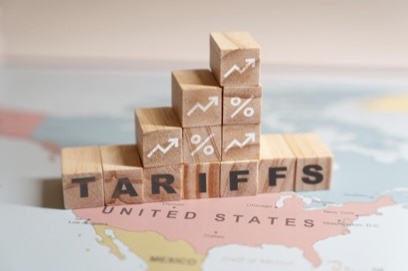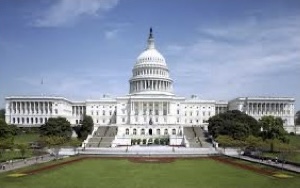Poll: Tariffs
This Navigator Research report covers perceptions of tariffs and President Trump’s priorities as costs increase for everyday Americans.
Today’s Big Takeaways
- Less than one-third of Americans view tariffs favorably, and a majority believe they are increasing costs and causing chaos.
- As costs increase, Americans are concerned about Trump’s handling of tariffs and inflation, and believe he is looking out for the rich and powerful.
- Messages about costs and about cuts are equally effective at raising doubts about Republicans in Congress.
As President Trump’s newest tariffs take effect, less than one-third of Americans report a favorable view of tariffs (31 percent), including only six percent of Democrats, 22 percent of independents, and 59 percent of Republicans. Besides partisanship, job type shows some division in how Americans perceive tariffs. Tariffs are still underwater across job types, but Americans working blue-collar jobs are more split (net -5), compared to Americans working white-collar jobs (net -30) or in the service industry (net -53).
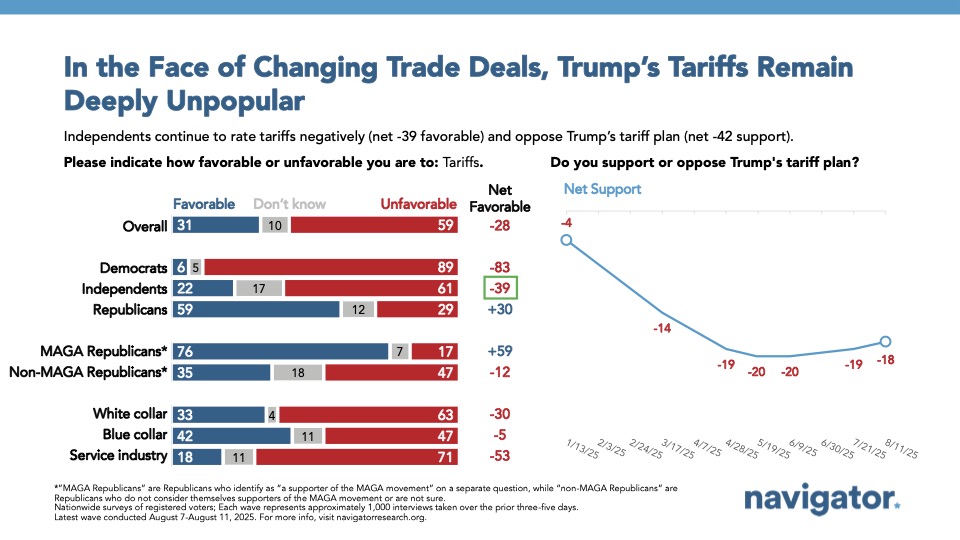
Effects of Tariffs
Two-thirds of Americans believe tariffs are making the cost of things they buy go up (67 percent), including 39 percent who believe they are making costs go up “a lot.” Majorities of both Democrats (86 percent) and independents (65 percent) believe tariffs are increasing costs, and around half of Republicans say the same (49 percent). Among Americans who voted for Trump but do not strongly approve of his handling of the presidency, 56 percent believe tariffs are increasing costs.
- A 16-point majority agree that “Trump’s tariff policy is creating chaos and damaging the economy while raising costs for American families” as opposed to being “effective, bringing other countries to the negotiating table which will ultimately strengthen the American economy.”
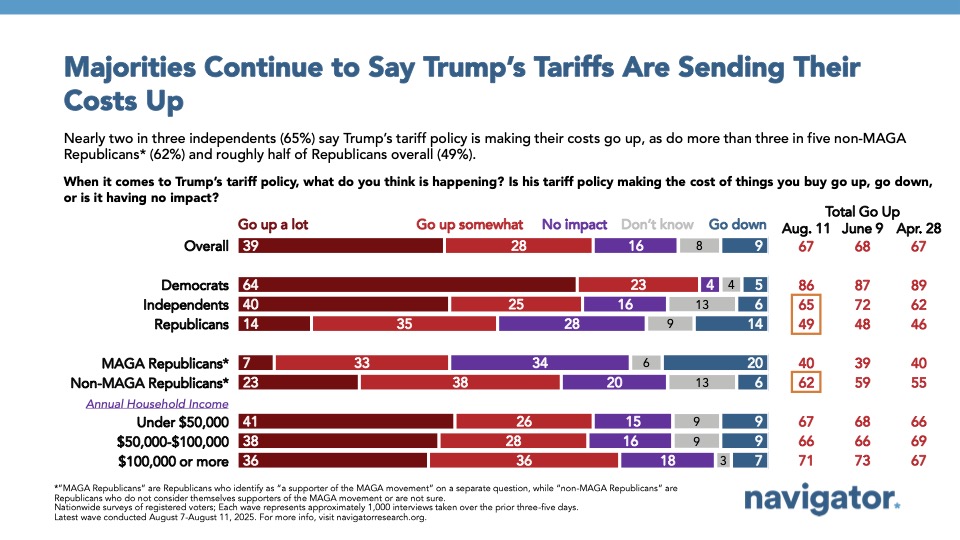
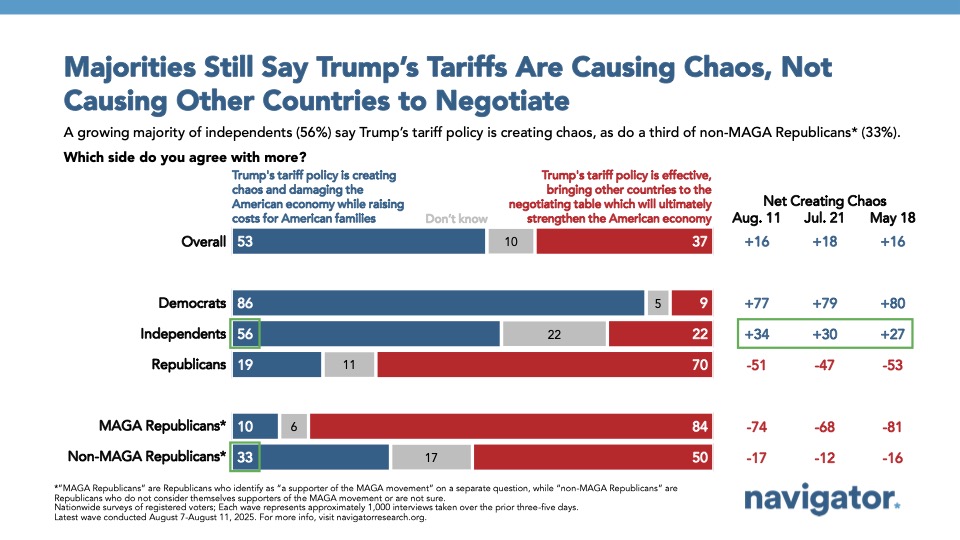
Priorities of Trump and Republicans
Americans are most concerned about the way Trump has handled tariffs and inflation. When asked to select up to four topics that raise the most concern over the way Trump has handled them, 44 percent said tariffs and 41 percent said inflation.
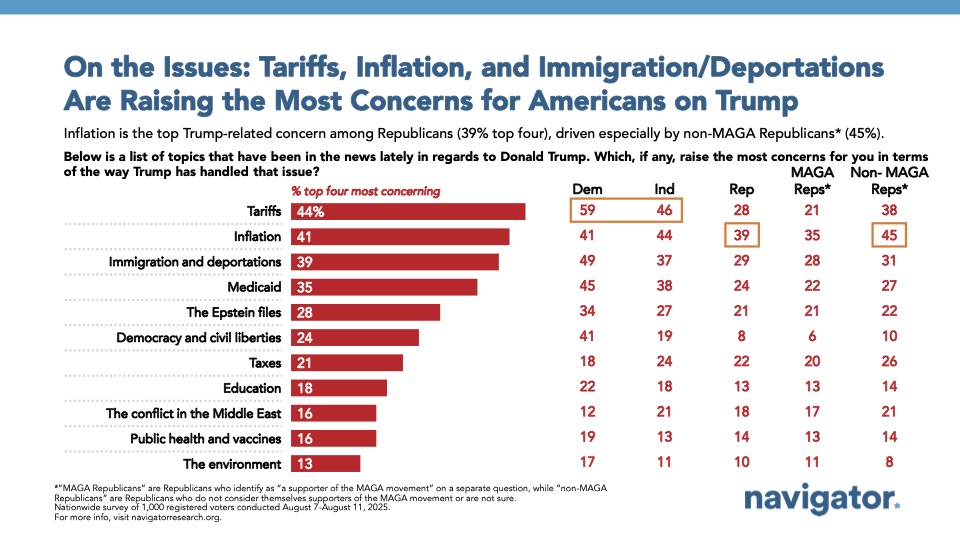
The most concerning message on the way Trump has handled the presidency is:
- Trump is looking out for the rich and powerful while cutting programs people rely on.
Followed by:
- Trump is deeply corrupt, abusing the office of the president for personal gain for himself and his rich donors.
Similarly, messages regarding both Republicans raising costs by imposing new tariffs (net +23) and Republicans cutting programs that Americans rely on (net +21) are popular.
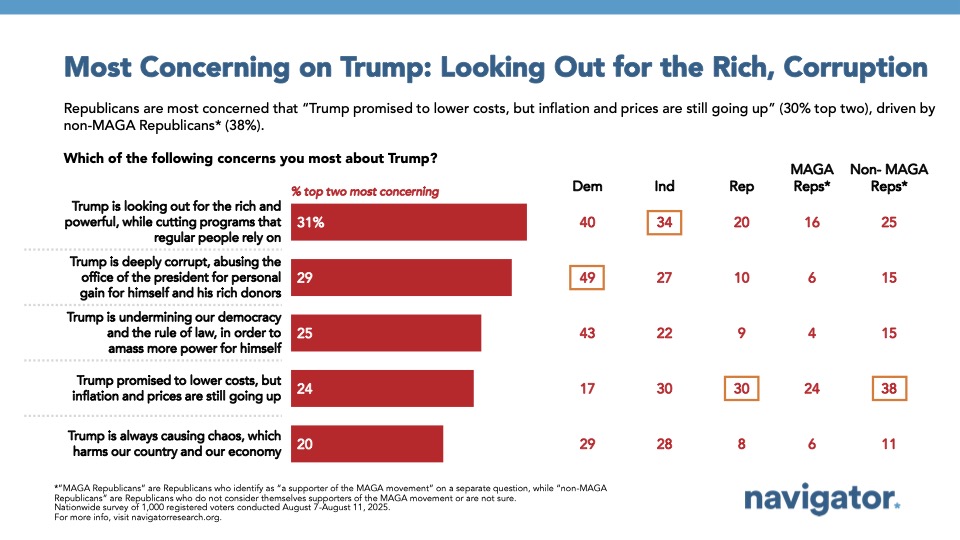
A majority are more concerned by a message on Republicans increasing costs and by a message on Republicans cutting programs Americans rely on. These messages are equally more concerning than a message that “Democrats who are spending too much money on government handouts and wasting taxpayer dollars.”
- Republicans who are raising costs by imposing massive new tariffs on everyday essentials like groceries, clothing, and cars, and passing new budgets that drive up prices on health insurance and utility bills (net +23; 56 percent more concerned); and,
- Republicans who are taking away things working families count on, including making the largest cut to Medicaid in history, eliminating health care for more than 10 million people, and taking food away from kids and families (net +21; 56 percent more concerned).
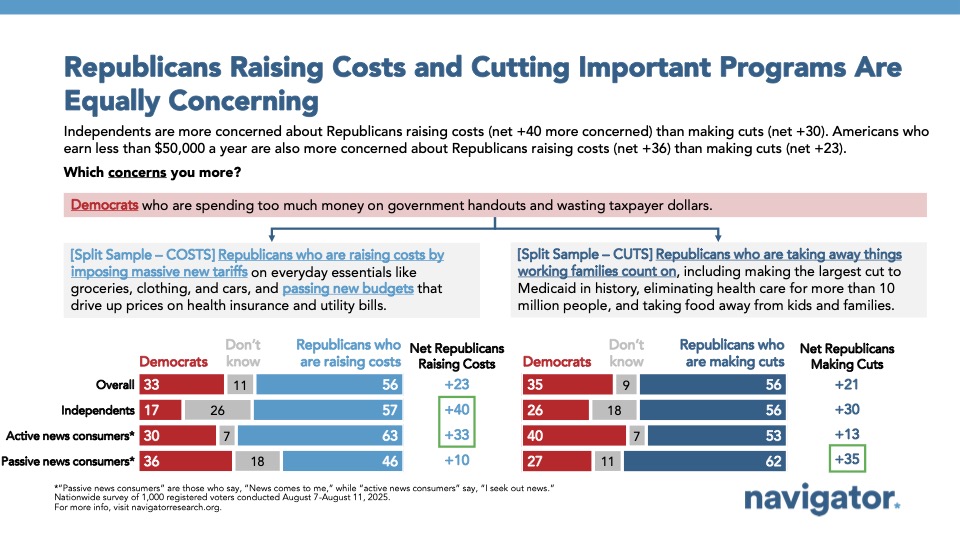
Recommendations:
1. Highlight Trump’s priorities:
Trump’s new tariffs are yet another example of him looking out for his own special interests and the rich and powerful – and that’s driving up costs for everyday Americans.
2. Message on both costs and cuts:
Republicans are increasing costs through new tariffs and cutting programs millions of Americans rely on, including the largest cut to Medicaid in history.
About The Study
Global Strategy Group conducted a public opinion survey among a sample of 1,000 registered voters from August 7-August 11, 2025. 100 additional interviews were conducted among Hispanic voters. 100 additional interviews were conducted among African American voters. 77 additional interviews were conducted among Asian American and Pacific Islander voters. 100 additional interviews were conducted among independent voters. The survey was conducted online, recruiting respondents from an opt-in online panel vendor. Respondents were verified against a voter file and special care was taken to ensure the demographic composition of our sample matched that of the national registered voter population across a variety of demographic variables. The margin of error for the full sample at the 95 percent level of confidence is +/- 3.1 percentage points. The margin of error for subgroups varies and is higher.
